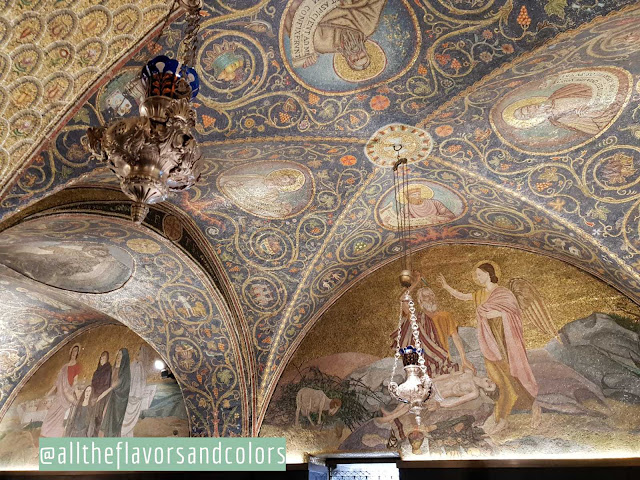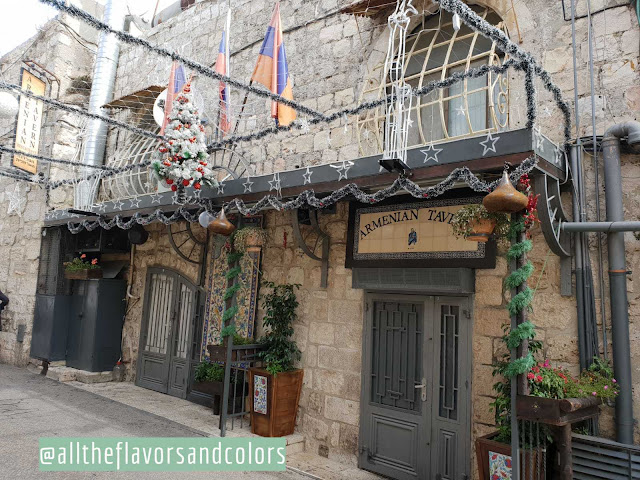Jerusalem is the land of diversity, where the ultra-Orthodox Jews walk alongside Christian pilgrims and Muslim believers. This contrast is mostly visible for the tourists visiting the deeply religious Old City of Jerusalem, one of the greatest historical sites in the world. Therefore, a visit at the Old City of Jerusalem is a must for any trip to Israel.
Within the ancient walls, the Old City is divided into four quarters: the Jewish Quarter, Armenian Quarter, Christian Quarter and Muslim Quarter, each with its unique atmosphere and charm.
The Christian quarter
The heart of the Christian quarter is the Church of the Holy Sepulchre. Tradition has it that this church occupies the site of Golgotha, where Jesus Christ was crucified and buried. Christ’s Tomb lies inside a 1810 monument, where a marble board covers the rock on which Christ’s body is believed to have been laid. On the right of the church’s main entrance two staircases lead up to Golgotha.
Once you reach the Jewish quarter, do not miss an extensive tour of the Citadel (Tower of David), located next to Jaffa Gate. This is a fortified complex dating since the 2nd century BC that now houses the Museum of the History of Jerusalem and offers great views over the city.
The Jewish quarter
Extensively reconstructed since 1967, as it has been heavily damaged during the 1948 War, the Jewish quarter is organised around Hurva Square, the heart of the quarter and one of the few open spaces in the area.
In the Jewish quarter you’ll find the Western Wall (the Wailing Wall), one of Judaism’s holiest places, believed to be part of the great Temple dating from the 1st century BC. No matter the hour you reach the Wall, you’ll meet hundreds of people praying in front of it. During the Ottoman period, the wall became where Jews came to lament the destruction of the Second Temple, thus the name the Wailing Wall.
The Muslim quarter
The Muslim quarter is the largest of the four quarters. The heart of this quarter is Haram esh-Sharif (the Noble Sanctuary), a vast esplanade that became an Islamic holy place in AD 691 with the building of the Dome of the Rock. Dome of the Rock, the first great religious complex in the history of Islam, was built in AD 688-691. Intended to proclaim the superiority of Islam and provide an Islamic focal point in the Holy City, this beautiful structure became one of the symbols of Jerusalem. Note that Non-Muslims are not permitted to enter the Dome of the Rock or Al-Aqsa Mosque.
You may be surprised to find out that the most extensive part the famous Via Dolorosa (“Way of Sorrows”) - Jesus’ final path, where he walked to be crucified - passes by the Muslim quarter. Each Friday, a Roman Catholic procession walks the Via Dolorosa route, starting out at the monastic complex by the first station; the procession is organized by the Franciscans of this monastery, who also lead the procession.
The Armenian quarter
This is where you’ll find the Armenian Church and the Gulbenkian Library, preserving artifacts and resources on Armenian history and culture.
Then planning a visit to Jerusalem, do remember that Shabbat is a time of rest all around Israel. During this day, religious Jews avoid performing any kind of physical work. Therefore, most restaurants will be closed, as well as all markets and shops. Also, public transportation will not operate.









































Niciun comentariu:
Trimiteți un comentariu